12 Tips for Successfully Managing a Remote Software Development Team
Key takeaways
- Since the start of 2020, the number of remote teams has doubled, and it keeps growing. Find out why many businesses prefer a remote format of cooperation.
- Get important tips on how to successfully manage a team: Everything from communication tools to use to getting your workflow right and avoiding all the major remote management challenges.
- Explore the main mistakes in managing software development teams a team, such as being intrusive, setting unclear objectives, and using poor terminology, and how to overcome them.
Remote working has become an integral part of numerous businesses these days. This became especially evident due to the rise of outsourcing expenses, which may total $731 billions globally by 2023. It allows companies to hire talented employees from anywhere in the world and provide them with flexible working hours. However, remote management of a software development team can be a challenge for even the most experienced executives. Leading a remote software development team is similar to leading an orchestra; without an experienced conductor, the performers may each individually make lovely sounds, but the symphony as a whole will be disconnected and chaotic.
But, in this article, we’ll go over how to set up an effective management process for a remote development team so that no single musician is out of tune and your project is successfully released , meeting all your requirements.
Remote teams overview: statistics, benefits, and challenges
Starting in 2020, almost all areas of life have gone online.But the transition from office-based to remote work has been the biggest transformation. As the COVID-19 crisis begins to subside, many people and entire companies want to continue working remotely. This is supported by a ZIPPIA survey, which found that 81% of workers believe that their employer would keep using a remote working strategy in the future. The number of remote teams only continues to grow and has doubled since the beginning of 2020.
Also, with the move to remote working, the outsourcing and outstaffing model of cooperation is becoming even more popular, and businesses continue to benefit from this format of cooperation. We can confirm this with research from Statista. According to the source, the IT outsourcing sector revenue is projected to reach USD $430.50 billion in 2023. The revenue growth rate (CAGR 2023-2027) is also estimated to be 8.07%, resulting in a market volume of US$587.30 billion by 2027.
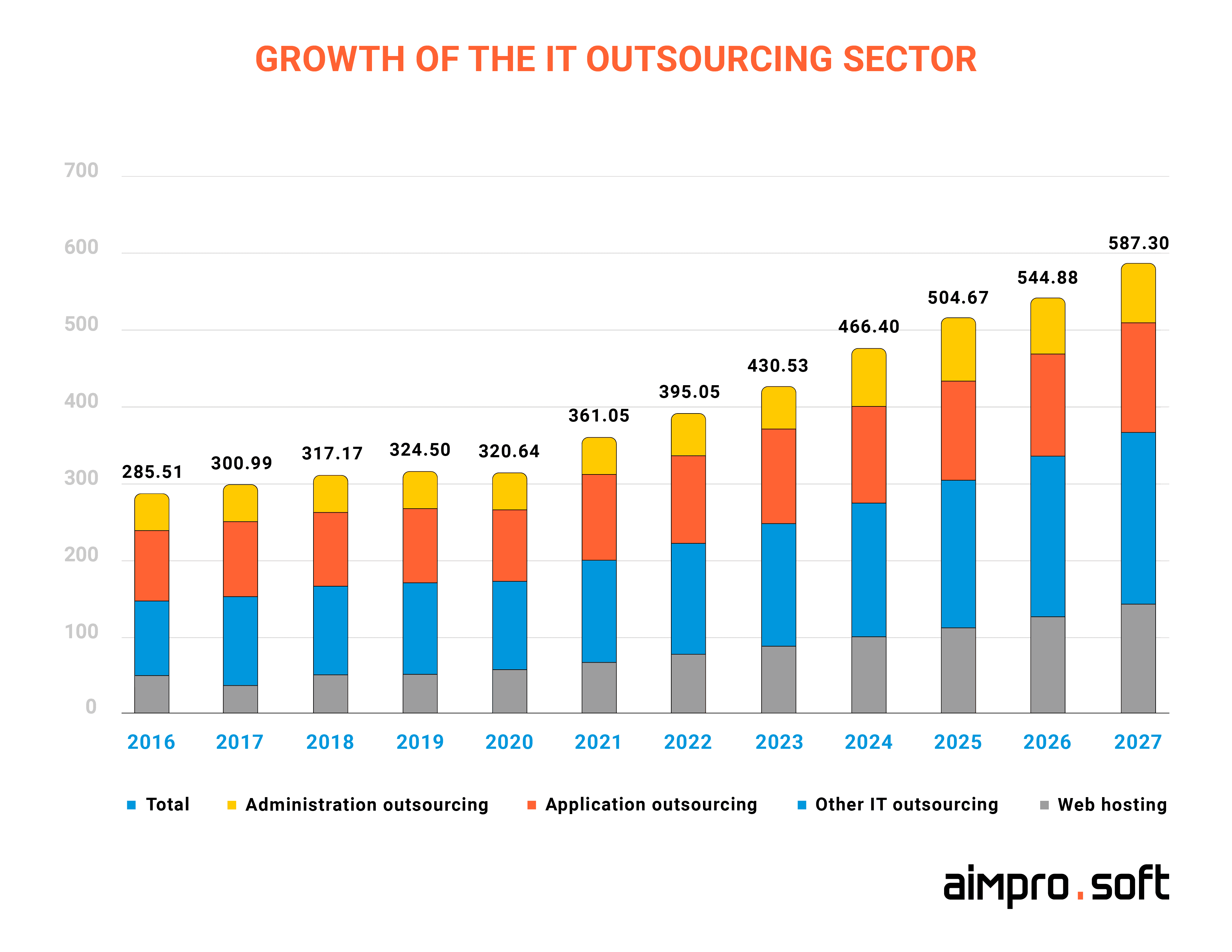
Growth of the IT outsourcing sector. Source: Statista
This growth in popularity of outsourcing and outstaffing services usually has one clear benefit: cost-effectiveness. But this is far from being the only reason; there are many more.
The benefits of outsourcing and remote teams for modern businesses
Having explored the current landscape of remote work, let’s examine the main pros of moving to a remote working format and hiring a development team abroad.
Increased flexibility
Working remotely enables employees to work from any location freeing businesses from spendings on office equipment and maintenance. It also means that you can adjust the size of your team with less effort, time, and money spent compared to in-house employment. You may need another developer, but you won’t need to conduct multiple interviews since the vendor handles everything, and you will get the right expert in the short term. This format will make your business more flexible and reduce the time you spend on recruiting and training.
Access to a global talent pool
When you’re not limited to a specific location, you can hire top talent from all over the world. This greatly extends your options, as your area may lack qualified professionals. Also, a nice bonus is that the developers’ hourly rates in other countries can be considerably lower than in your location.
Improving productivity
Research has revealed that remote workers frequently outperform their office-based counterparts in terms of productivity. They frequently have more flexible schedules, can work during their peak productivity times, and can stay away from office distractions.
Continuous business processes
The remote cooperation model can help you keep your operation running even despite unforeseen circumstances. You can continue to run your business with the help of remote staff even if your physical office is unavailable for some reasons.
An opportunity to reduce costs
Companies that hire remote dedicated teams can save up to 70% in development costs. After all, if you outsource, it not only saves you time, but it can also save you money. By hiring outsourced teams, you save your budget that could have been spent on recruitment, onboarding, insurance, and retention programs.
Want to know more about the pros and cons of hiring remote teams? Check out our guide on the subject
Key challenges in managing remote and outsourced teams
We have highlighted a few of the most common benefits for which companies turn to outsourcing and hiring remote software development team. But no barrel of honey is without a fly in the ointment. Business owners still face some challenges in managing software teams, and here are some of the obstacles:
Lack of face-to-face communication and collaboration
Due to the lack of in-person encounters, remote teams may have trouble communicating and cooperating with one another. This can lead to miscommunications and a lack of alignment.
Difficulty in managing software development teams performance and productivity
It can be difficult for managers to make sure that remote software development team members are completing their assignments on time and to their full potential, especially if they are not physically present to oversee them.
Time zone differences and communication barriers
Scheduling meetings and organizing work can be challenging when remote teams are dispersed across various time zones. Such a problem may result in project deadline delays and miscommunications, which may harm the company’s overall productivity.
Although these management difficulties may seem inevitable, we are here to prove otherwise and share those measures that can be taken to make the entire management process seamless. Below you will see a detailed list of the best management tips, enriched with insights from our top experts in the field to ensure that your cooperation with a remote team goes smoothly and without complications.
Tip 1. Hire only the right people for your project
When managing software teams, all members must have specific qualities that will help make the development process coherent and make driving the team from a distance easier. Here are some soft skills to look for in team members:
Strong communication skills
The ability to express ideas clearly, and actively listen to others can minimize misunderstandings and increase efficiency and productivity, which will ultimately ensure the process of developing your project is completed on time.
Self-motivated and accountable
Team members are frequently asked to handle their time management and operate autonomously in a remote work setting. Employees that are self-driven and responsible can make sure they deliver high-quality work on time and do not require continual monitoring.
Team-oriented
To accomplish the project’s objectives in a remote software development team, team members must collaborate and assist one another. Team-oriented individuals can provide constructive criticism, assist others when necessary, and cooperate to get things done. This can improve team dynamics and raise the possibility of project success.
Tip 2. Gather all the necessary documentation about the project
Project documentation, such as requirements, technical specifications, and timelines, should be collected and shared with all team members to ensure the same understanding of the project’s essence, objectives, and tech nuances. The project documentation is usually collected during the discovery phase. The documents collected during the discovery phase are used to ensure that all stakeholders, including the remote development team, are aware of the main goals of the development and the outcome that is expected.

The activities that are completed during the discovery phase:
- Requirement analysis
- Understanding the specifics of the domain
- Defining target audience
- Competitor analysis
- Documenting the requirements
- Time and cost estimation
As we can see from the activities above, the discovery process is not only about helping you and your remote team to understand a clear path for the project but also about helping your business as a whole.
It follows that the remote development team can better understand the project requirements and ensure that their work aligns with the project’s overall aims. Also, the discovery phase will help prevent miscommunication, product iterative redevelopment, or, conversely, identify missing features for the business, as well as help you set clear goals for your remote team.
Do you want to learn more about how the discovery stage can help you to set goals for your project and your business as a whole? Read our article on the subject
Tip 3. Set goals and expectations for your teams
Once you have carried out the discovery stage and know exactly what your project aims are, you must communicate your thoughts and objectives correctly to your remote and in-house team. Because knowing how to manage developers also involves providing them with clear goals and expectations. Here are some explanations of why it is important to inform your staff:
What clear goals can give to the project:
- Clarification of priorities ㅡ team members may clearly prioritize their duties when they are aware of the project’s objectives. This keeps everyone in the team focused on the same goals and reduces confusion.
- Improved accountability ㅡ establishing a culture of responsibility, raising motivation, and productivity can be accomplished by having everyone on the team know what is expected from them.
- Reduction of micromanagement ㅡ setting clear priorities affects the ability of team members to work independently without needing constant supervision. This can free up the manager’s time and allow them to focus on more strategic tasks.
When setting goals and expectations for a remote development team, it is important to be specific, measurable, achievable, relevant, and time-bound. This will help you make sure that all team members know their responsibilities and are moving towards common goals.
Tip 4. Prepare your existing team
Preparing the current team involves getting them ready to move to remote working. This entails supplying them with the appropriate software and communication tools and instructing them in their efficient use. To prepare your existing team for remote working, you can:
Identify the team’s technological requirements: Ensure each member can access a dependable computer and fast internet. Also, they must have access to all the equipment and software required for their jobs.
Conduct training: Confirm that your team members have received instructions on using the software and communication tools necessary for remote collaboration.
Be flexible: Be prepared to adjust your expectations and communication style as your team adapts to the new remote working environment.
By providing the necessary training and support, you will assist your team in building the skills and mindsets needed to work effectively in a remote environment. In addition, creating a culture of trust and collaboration will help keep your team members motivated and engaged, even if they work in different locations.
Tip 5. Establishing clear communication channels
This vital aspect is essential for effectively managing development teams. Without a clear communication plan, misunderstandings, miscommunications, and errors can occur, leading to delays in project development.
It is essential to establish communication standards and expectations. For example, you can set rules on how quickly team members should respond to messages or how often they can retaliate against the work they have done. Clearly define your preferred methods of communication and the way project updates should be delivered.
Also, to define clear communication channels, choose the communication tools and platforms your team will use. Will it be email, instant messaging applications, video conferencing software, or project management tools? Once you have chosen the tools, ensure all team members know how to use them effectively.
Let’s now examine corporate communication applications and tools so that you know some great examples to choose from.
Tip 6. Choose the right communicational tools
With the rise of remote work, remote teams software has become a vital tool for managing and communicating with distributed teams. Choosing the right tools is important to effectively manage remote team. When team members work in different locations, communication tools are key to keeping everyone on the same page and always completing all tasks on time. While choosing tools, you should consider the following factors to choose the right one:
- team’s communication requirements
- the tools’ user-friendliness
- security features
- integration with other tools
- pricing
The tools you select should be secure and simple to use so that the sensitive data you exchange is properly protected and your team members can start using it without spending too much time understanding its functionality.
Here are some tools that can help you communicate with your remote team:
Asana

Asana helps teams manage tasks, deadlines, and projects. It is currently used in 195 countries, and the number of companies using it as a corporate management tool will be 75,000 in 2023. It can be said that Asana is a really popular and successful product, as their annual revenue is $100 million.
Asana’s main features:
- Task management
- Time tracking
- Customizable workflows
- Budgeting and expense tracking
- File sharing
- Reports and analytics
- Integration with other tools
- Mobile app
Pros:
- User-friendly
- Wide range of features
- Integrates with other tools
Cons:
- The free version has limited features
- A paid version is quite expensive
Basecamp

Basecamp facilitates project management and team collaboration. Basecamp is used by 16 million people worldwide, and it generates $25 million in income each year.
Basecamp’s main features
- Project boards
- To-do lists
- Messaging and group chat
- Document sharing and collaboration
- Scheduling and calendar management
- Time tracking and reporting
- Client access and communication
- Mobile app accessibility
- Integration with other tools and services
Pros:
- User-friendly
- Simple interface
- Affordable
Cons:
- Compared to other project management systems, it lacks several advanced features
Slack

Slack is one of the most well-liked instant messaging programs that enables real-time team communication. According to the statistics, Slack is widely used, including the fact that more than 600,000 firms utilize it and that it has over 10 million daily users, which attests to its popularity.
Slack’s main features:
- Direct messaging for private conversations
- Video and voice call for remote meetings
- Integration with other tools and services
- Notifications and alerts
- Searchable history of messages and files
- File sharing
- Slackbot for automating tasks and providing reminders
Pros:
- Integrates with other tools
- It has a wide range of customization options
- Has a search feature
Cons:
- The free version has limited features
Trello

Trello is a project management tool that helps teams manage tasks and projects using a visual board. Trello currently attracts 150,000 new users per week. And the number of active Trello teams is 1 million.
Trello’s main features:
- Boards, cards, and lists for project management
- Checklists for subtasks within a card
- Task allocation to multiple team members
- Deadlines for tasks
- Activity logs to keep the team up to date
- Attachments for efficient resource organization
- Built-in automation with a butler to reduce tedious tasks
Pros:
- Has a simple interface
- Customizable
Cons:
- The limited mission of tasks
In terms of communication with a remote team, all of these apps have features that can be helpful for managing. All of these applications also have data protection, which is carried out by SSL encryption to protect users’ personal information. With the help of remote team management software, businesses can ensure that their remote teams stay on track and meet their deadlines, no matter where they are located. In general, the choice of the tool should be based on the particular requirements of the team and your project needs.
Tip 7. Focus on long-term goals
Focusing on long-term goals rather than just current business objectives is crucial for managing a remote development team. It provides clear direction and purpose, creates motivation, helps with planning and prioritization, and allows you to track progress and success. Setting realistic and achievable goals and communicating them clearly to the team is essential.
Here are a few simple suggestions that can help meet the long-term objectives of the project:
- Break down your objectives into smaller, more manageable tasks and prioritize them according to their impact on the project’s desirable outcome.
- Consider the resources at your disposal and be prepared to adjust priorities as resources change over time.
- If possible, involve your team in the process, as this will ensure that everyone agrees and is committed to the objectives and can provide valuable ideas and perspectives.
By following these steps, you will be able to set long-term priorities that are achievable, influential, and in line with your project vision.
Tip 8. Set project deadlines
Deadlines help keep the project on track, ensure that work gets done on time, and facilitate effective communication within the team. With clear project and milestone deadlines, it is easier to manage remote team more effectively, and the risk of delays, missed deadlines, and other issues that can affect the project’s success grows. Below we discuss why setting deadlines is essential for your project.
They keep the project on track. Establishing deadlines ensures that work is proceeding well and helps to maintain the project’s direction.
They help in planning. A clear deadline allows project managers to plan resources, anticipate possible delays, and ensure that the project is on schedule.
They facilitate communication. Setting deadlines supports communication between supervisors and team members. It helps to create a collaborative atmosphere within the team and ensures that everyone sticks to deadlines.
Tip 9. Set KPIs
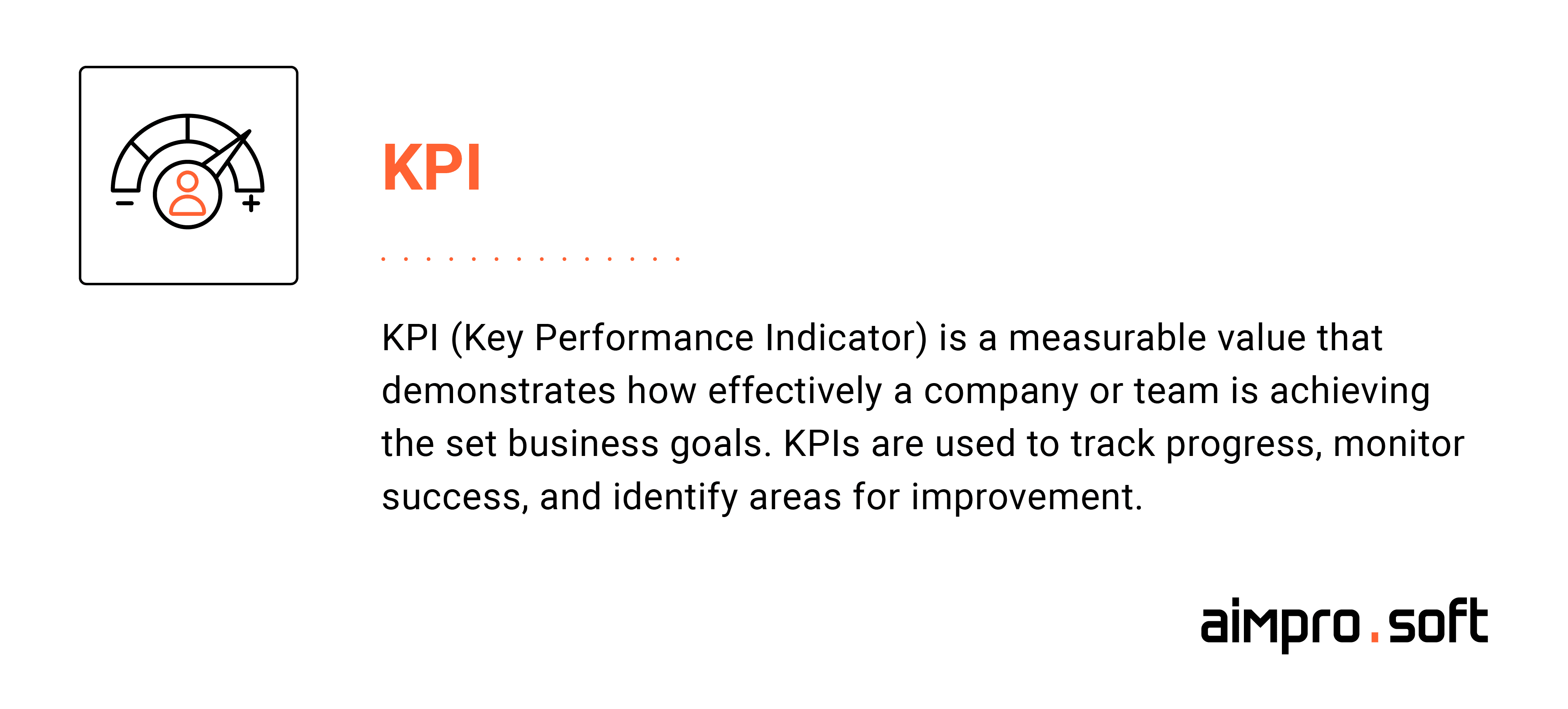
Establishing key performance indicators (KPIs) is a crucial quantifiable metric that helps project managers assess the productivity of a remote development team and the project’s progress. They provide the team members with specific objectives to work toward and aid in maintaining focus.
Here are some tips on how to use this metric competently:
- It’s critical to define KPIs that are in line with the project’s and the company’s overarching objectives. The KPIs must be precise, measurable, realistic, relevant, and time-bound. This makes them more likely to be attainable and practical.
- It is crucial to regularly monitor and assess the KPIs. This gives insight into the team’s performance and aids in pinpointing areas that need improvement. To keep the team motivated and involved, it’s also critical to recognize accomplishments and progress toward the KPIs.
- Include the team when establishing KPIs. By involving the team in the KPI-setting process, it will be easier to spot any obstacles or challenges that can hinder goal-achieving progress and provide the team the chance to come up with creative solutions.
KPIs might be very useful for development team management. They aid in laying out specific expectations for team members, which can be crucial while working in a remote setting.
Tip 10. Schedule regular meetings
As we’ve said before, to keep a remote team working smoothly, finding the right ways to communicate is crucial, and we’ve discussed the main tools that can help with this. Now it’s time to use management tools to their full potential. You can hold regular meetings with your remote development teams. These meetings are an opportunity to discuss ongoing projects, share progress, and address any questions or concerns.
- Frequent meetings aid in ensuring that everyone is on the same page and pursuing the same objectives. It establishes a foundation for good teamwork and communication, boosting overall productivity and efficiency.
- Also, regular meetings foster a sense of camaraderie and confidence between employees. Team members are more likely to feel involved and motivated when they believe they are part of a broader group working toward shared objectives.
Regular meetings are generally a key strategy for fostering engagement and communication between remote teams, facilitating efficient communication, and ensuring that projects are finished on schedule and meet the set standards.
Tip 11. One-on-one meetings
Earlier, we described daily team meetings, but now let’s look at another way to work well with a remote team: one-on-one meetings. One-on-one meetings are individual meetings that managers hold with each team member regularly. These meetings focus on each employee’s progress, problems, and goals.
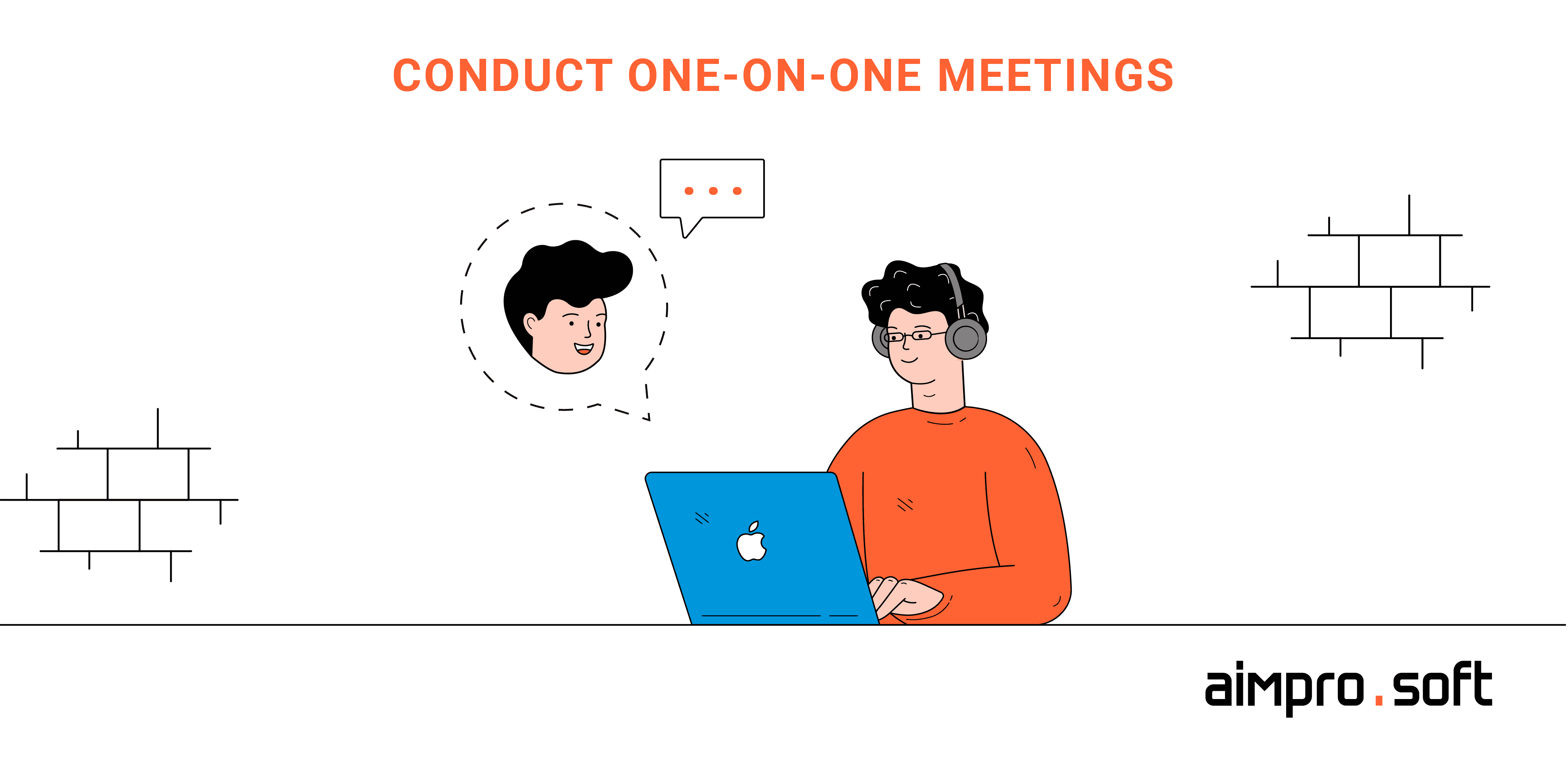
Don’t forget to set up one-on-one meetings
The purpose of one-on-one meetings is to establish personal contact with team members, provide a forum for open and honest communication, and provide feedback on individual progress toward goals. These meetings also help to boost morale and motivation as team members feel valued and supported by their manager.
Set an explicit schedule for these meetings based on each employee’s workload and capabilities, don’t hold them too often, and you’ll be happy. One-on-one meetings are not always used, but they are one of the surest ways to keep track of progress or errors in the workflow.
Tip 12. Provide ongoing feedback and encourage healthy criticism
Remember to give developers feedback to keep team members informed about their performance. Regular feedback will help team members feel supported and motivated and help identify problems early on before they become more serious. Similarly, when the supervisor gives feedback and gives criticism from their side or praise, it is worth remembering to give their staff the freedom to express their honest personal opinion.
Encouraging healthy criticism is, therefore, another important aspect of managing a remote team. This can help team members feel comfortable sharing their thoughts and ideas, leading to increased innovation and creativity.
It is vital to find a balance between giving feedback and encouraging criticism. Team members need to feel supported and encouraged to take risks and share their ideas, but they also need to think that their work is valued and appreciated. Managers can help their remote team identify and solve problems more effectively by providing regular feedback and encouraging healthy criticism.
The don’ts of remote management: avoid these common mistakes
So, we’ve talked about crucial remote software team management tips that can help you run your development team more effectively. It’s time to examine examples of common mistakes that business owners often make and ways to avoid them.
Don’t be sudden
Often, business owners could be abrupt, calling developers unannounced without stipulating the call’s subject in advance, which can be detrimental to an employee’s concentration. Our project manager said:
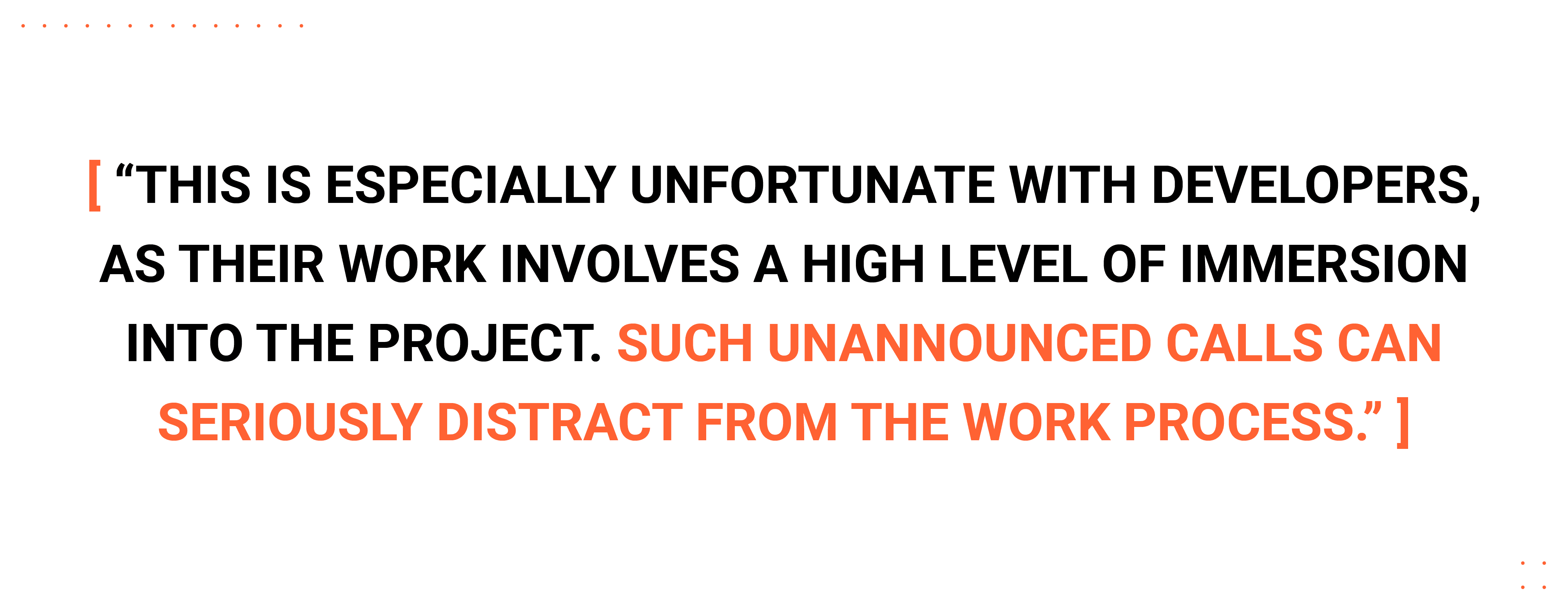
That is why you should always make an appointment and let them know what you want to talk about.
Don’t be dismissive of the terminology
It would help if you were as clear and specific as possible about what you expect from the developers because you are not communicating in person. You need to ensure that you are talking about the same things at the outset. Most often, for such purposes, a specific vocabulary of technical terms from which you should stay consistent and minimize the use of synonyms so there is no substitution of meaning. It is also worth creating a Glossary specifically for the project, which is also a variant of a project-related document. You may misunderstand each other this way, and the development process may be delayed.
Always be specific about the task
Each task for the developer should be clearly defined, with incredible attention to detail, so that after completing a particular task, the developer does not have to redo everything several times. The team member who has been assigned the task should have a clear understanding of exactly what you need to see in the end result. There should be check-ups, deadlines, and estimates calculated in story points or hours spent on the work.
We know that avoiding errors is often difficult, but we still hope that our description of the main mistakes in management has been useful and will inspire you to leading a software development team wisely.
Why should you hire a remote development teams at Aimprosoft?
Aimprosoft has been in the market for many 17 years and has acquired a status of a reliable vendor. And here are some of the reasons why we have gained the trust of our customers from all over the world:
- Client-centric approach
We’ve collaborated with clients from over 27 various countries, and we always pay close attention to their demands, abilities, and objectives. We also offer top-notch custom software development services that are precisely matched to multiple budget ranges, time constraints, and product complexity.
- A large pool of experts
Aimprosoft has more than 350 specialists who create software solutions, so we can always provide the needed specialist for your forthcoming project or expand your in-house team.
- Expertise
We have a proven track record, including over 600 successfully finished projects. And 80% of the time, our satisfied clients return to us to create their new products.
Our recognition in the IT field
Aimprosoft received numerous awards in 2022 for being the top Ukrainian provider of software development, producing web and mobile applications for clients all over the world. Moreover, in 2023, our dedicated development company has already won an award from SoftwareWorld.
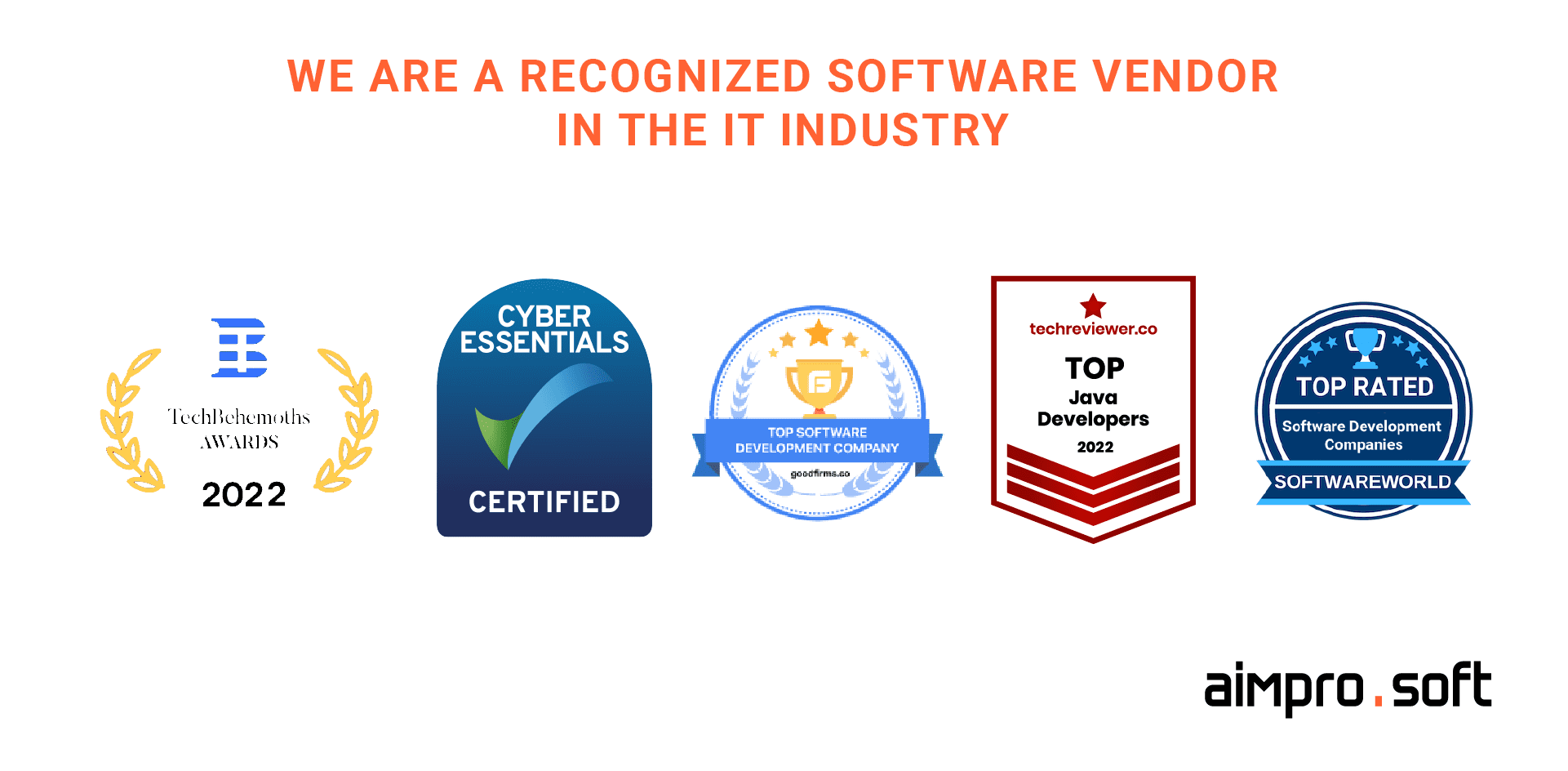
Visual examples of our awards
We have been included in various top lists composed by independent review platforms, to name a few:
- Top 10+ app development companies in 2023 by SoftwareWorld
- Top Java developers in 2022 by Techreviewer
- Top loT development companies in Ukraine by TechBehemoths
- The security-certified companies by Cyber Essentials
- Top software development companies in Ukraine by GoodFirms
Our experience in a remote cooperation format
When the entire globe, in Covid times, began to discover the world of remote working in 2020, it was already commonplace for our company. We have a lot of experience with remote work. Since the very foundation of the company, we have worked with clients from different countries in a distant format. Therefore not only our project managers can build competent communication with stakeholders, but our developers know the importance of communication, documentation, check-ups, and meetings and know how to work with remote clients. They are always ready to get feedback, respond on time, and meet all deadlines.
Moreover, our project managers prepare a communication plan tailored to each client, making the connection between the client and the development team as comfortable as possible.
Conclusion
Managing a remote team can be challenging, but it can be made easier with effective strategies and best practices. And with regular meetings, proper time management, and a focus on long-term goals, you can build competent and results-driven communication with your remote team, overcoming any obstacles that arise and releasing a successful product as a result. And if you still have a question on how to manage a software development team and are looking for the perfect vendor to hire developers for a specific need, you are always welcome to contact us. We will help you with the smooth management and development of your product.
FAQ
What is remote software development, and why is it becoming so popular?
Remote software development is the practice of developing software products or applications by a team of developers who work from different locations without being tied to a particular area. It is becoming increasingly popular due to its many benefits, such as reduced costs, access to a global talent pool, and increased flexibility.
What are the main challenges of remote software development team management?
The main challenges in managing a remote team include barriers in communication,productivity and accountability, maintenance of team cohesion and culture, and technological and logistical issues. But in this article, we offer all the possible solutions to overcome most of these challenges.
How to effectively measure the performance of developers?
Clear goals, key performance indicators (KPIs), regular feedback, and the use of tools like time-tracking software are all necessary for measuring developers’ performance effectively. It’s crucial to consider things like task complexity, a person’s abilities and experience, and any obstacles or distractions that can possibly reduce productivity.
How can I ensure that my remote software development team is productive and motivated?
Establishing clear communication channels, offering frequent feedback and appreciation, setting clear goals and expectations, and fostering a pleasant work culture are some ways to make sure your remote software development team is productive and motivated. In order to prevent burnout, it’s also critical to give team members the knowledge and tools they need to execute their jobs well and to prioritize work-life balance.
How can I get my remote software development team to communicate effectively?
To ensure effective communication with remote software developers, it’s important to schedule regular meetings, encourage open and honest communication, and provide informal communication opportunities. It’s also helpful to use collaboration tools and establish expectations for response times and availability.




